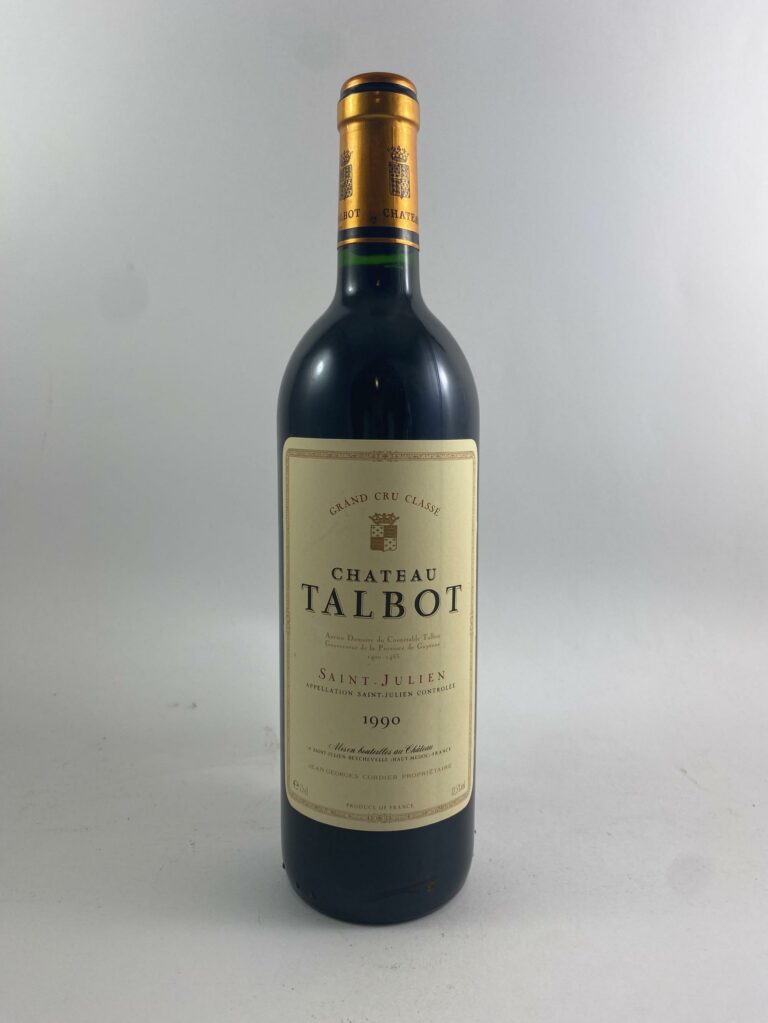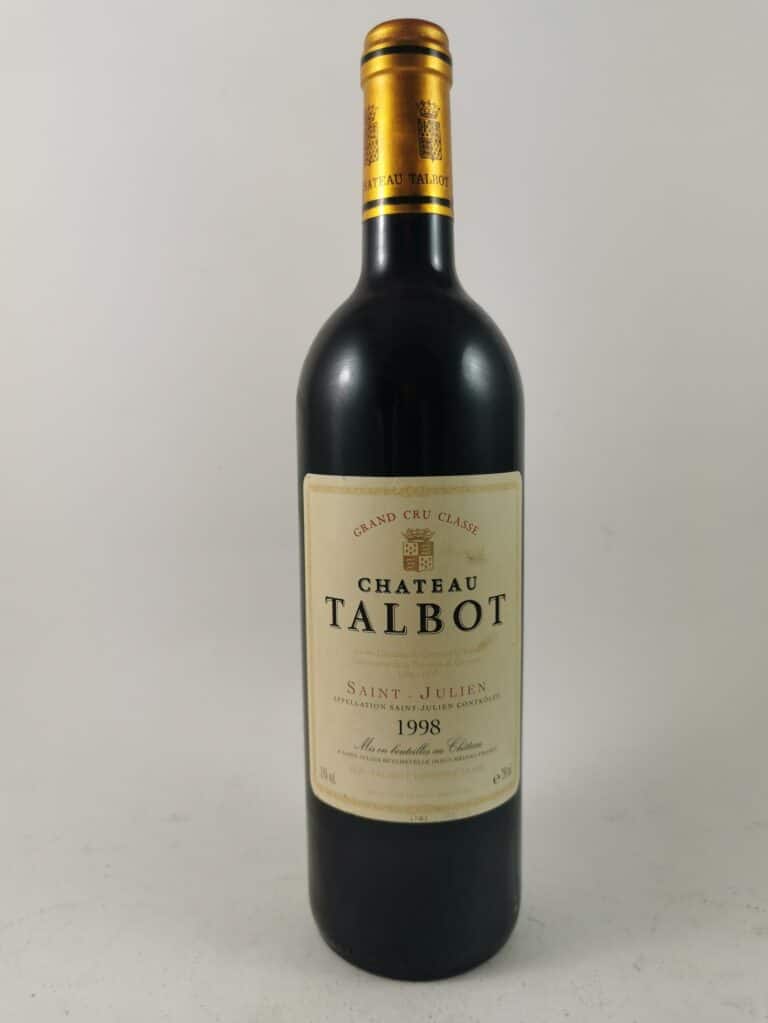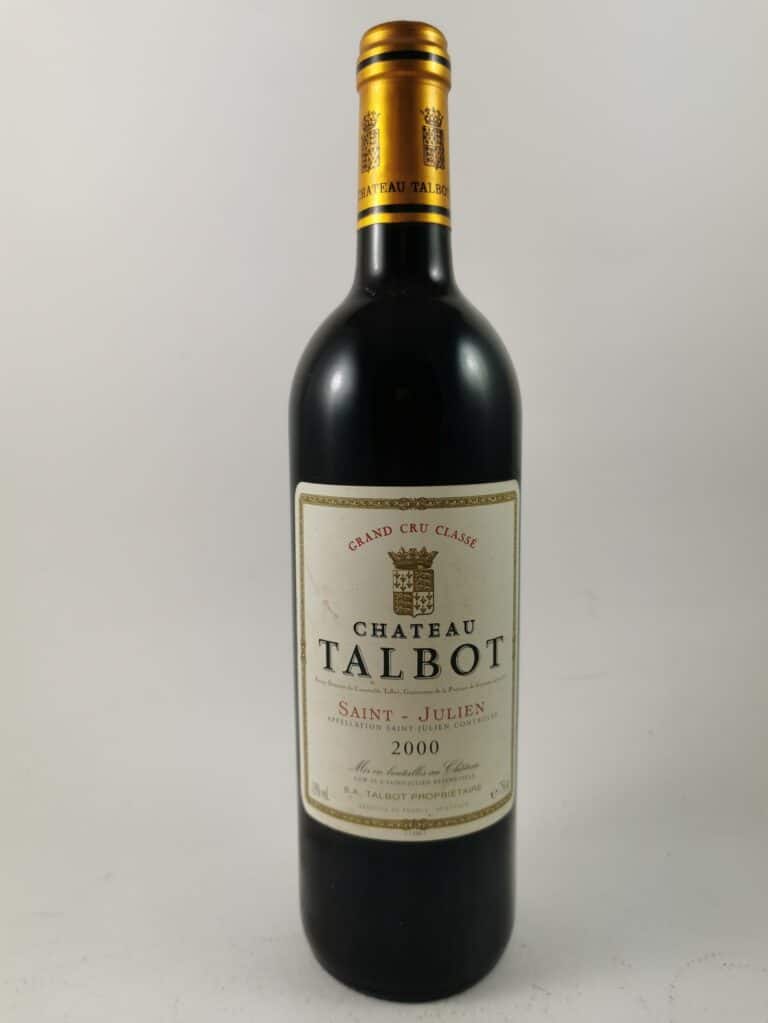Red wine Talbot, our wines from Château Talbot
Today, the Château Talbot estate is managed by Nancy Cordier and Jean-Paul Bignon. Originally, the name Chateau Talbot pays tribute to a proud fighter of British origin: Constable Talbot who was also Count of Shrewboury. During the battle of Castillon, which took place in 1453, this brave soldier died.
Talbot Wines, the domains of Saint-Julien
This appellation, which covers 900 hectares of vines, characterizes the Médoc. It has the particularity of designating soils made of Garonne gravel. Thanks to this particularity, a natural drainage, adapted to the nature of the vine, takes place. The Saint-Julien appellation includes 11 classified growths. Overall, Saint-Julien wines have a fine palette of flavors that have an exquisite balance. These distinguished wines pay tribute to the subtlety of Margaux wines as well as the intensity of Pauillac wines.
It took a few centuries after this incident for the ownership of the estate to be assigned to the Marquis of Aux. They in turn sold the Château aux Cordier in 1917. Renowned in the field of wine negotiations, they were responsible for ensuring the distribution of the estate’s products until the establishment of a large-scale sales system. We mention that this prestigious family owns another Saint-Julien estate: Château Gruaud Larose. It also manages two vineyards:
The Domaine Saint-Andrieu
The acquisition of this domain dates back to 2003. The production is centered around White, Rosé and Red wine. The wines produced bear the appellations Côtes de Provence and Côteaux Varois en Provence.
The Château Sénéjac
In the past, this domain was a Barony. It joined the Cordier family properties in 1999. It produces mainly red wines that bear the appellation Haut-Médoc.
The grape varieties of Talbot red wine
Château Talbot covers an area of 110 hectares. Also, it is the 4th reference among the 11 grands classés of Saint-Julien in the Médoc. The red vines occupy the majority of this terroir of fine Günzian gravel. Indeed, the area of white vines is only 5 hectares.
Behind the success of this wine, there is a dynamic and dedicated team led by the vineyard manager Damien Hostein, with the participation of Jean-Max Drouilhet as cellar master. In order to supervise the quality of the vineyard, Eric Boissenot – famous oenologist – and the consultant Stéphane Derenoncourt, intervene regularly in the domain. This is how Château Talbot obtained the level 3 High Environmental Value label.
The different grape varieties
As for the red vines, we note the dominance of Cabernet Sauvignon. This grape variety is very popular in the Saint-Julien region and is present at 66%. It gives the vine its aromatic power as well as its tannic identity. We also mention 30% of merlot grape variety which brings a soft and pleasant dimension to the wines. Finally, we note the addition of Petit Verdot to the extent of 4%, which is particularly evident in large vintages.
As for the white wines, their grape variety is a fusion between Sauvignon (80%) and Semillon (20%)
What about the vinification of Talbot wines?
In order to obtain the exceptional red wine for which Chateau Talbot is famous, the vinification is done in large wooden vats while taking care of the right temperature. The process can also be done in stainless steel tanks when it comes to young vines. The wine is then aged in oak barrels for a period of 14 to 16 months. Thus, the overall annual production allows for approximately 25,000 cases.
Talbot’s cellars
In 2012, the Talbot winery was developed in an innovative and contemporary way thanks to the work of two architects from Bordeaux. This space is truly a first in the entire region. It encompasses a space of 1,500 m2. Upon entering, the visitor has the impression of venturing into a forest with concrete trees that are 7 m high. In this space, a glaze of aluminum covers the walls and gives the space a great luminosity. Behind it, we find all the technical aspects that allow us to control the ambient temperature as well as the energy.
Nearly 1,800 barrels can be installed in the Château Talbot cellar. They evolve at a specific temperature of 17°C during a period of 16 months. The different criteria such as the selection of coopers, the duration of the ageing in wood or the frequency of racking change according to the specificity of the batch.
The assembly
Assembly is a very sensitive process. It is a meticulous operation that determines the way in which the wine will evolve. It’s an equation that hinges on several variables such as the grape varieties, the age of the vines, as well as the origin of the barrels.
Talbot wines: their flavors
Among the wines of the estate, we can mention first of all Chateau Talbot, which is one of the most sought-after wines of the Medoc. Even consumed at a young age, it will always be appreciated thanks to the smoothness of its tannins. Its olfactory bouquet is characterized by a great stability which makes it an excellent wine to keep. You will distinguish notes where liquorice and Havana appear.
We will also mention the Connétable Talbot. This wine was born in the 1960s. Thanks to the meticulous management of the vineyard and the high standards of the selection criteria, this second Médoc wine is highly tasty. As elegant as it is refined, it offers you an exceptional tasting with an exquisite freshness.
Talbot red wine: exceptional vintages
Wine If you wish to enrich your cellar, the most remarkable vintages of Château Talbot are in chronological order: 1961, 1982, 1986, 2005, 2009, 2010, 2015, 2016, 2017, 2018.















